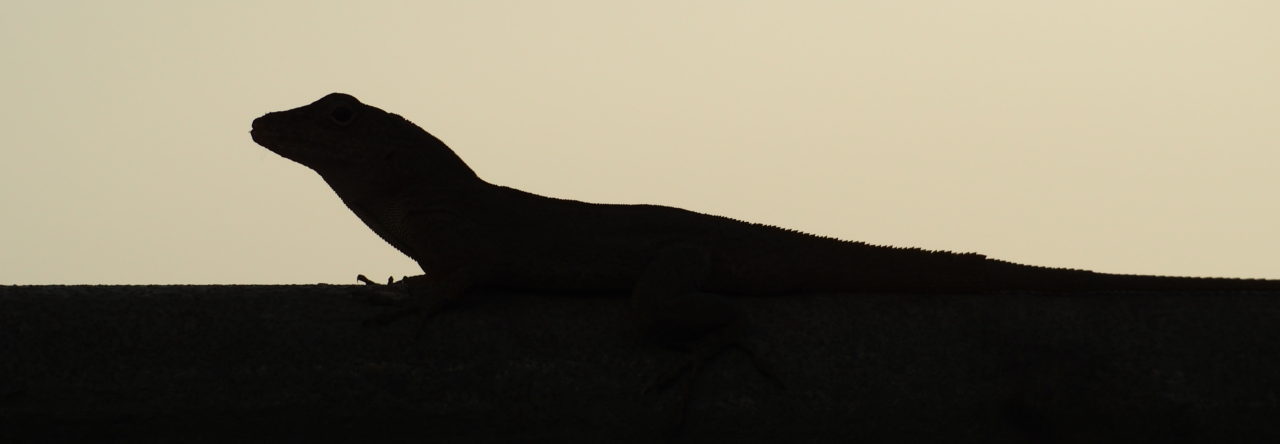
What have I done? Capuchin monkey photo https://www.anoleannals.org/wp-content/uploads/2011/10/capuchinmonkey011.jpg?w=300
Sure they’re cute, but in reality they are anole-killing machines. Well, maybe that’s an exaggeration, but at least some monkeys will eat just about anything, and I was once told of a capuchin that caught a large anole (A. frenatus), held it by its hindparts and smacked its head repeatedly against a branch to dispatch it, and then ate it. This is why life is so tough for mainland anoles–there are so many critters out there trying to eat them.
Any way, that brings me to the subject of this post. In a recent Natural History Note in Herpetological Review (Vol. 42, pp.432-433), Cassimiro and Pereira Martins report an observation of a crested capuchin monkey (Cebus robustus) eating a Polychrus marmoratus, which ironically has the common name of “monkey lizard.” Although we now know that Polychrus is not the sister group of anoles, still, if a monkey’s eating monkey lizards, it’s probably eating anoles, too. And, in any case, we at Anole Annals are not going to discriminate against the poor monkey lizards just because they’ve lost their special status as almost-anoles, and hence we will continue to report from time to time on late breaking developments in the monkey lizard world.
 A few weeks back, we reported the death of an anole at the hands–er, pedipalps–of a spider. Now Janson Jones reports the opposite.
A few weeks back, we reported the death of an anole at the hands–er, pedipalps–of a spider. Now Janson Jones reports the opposite.







